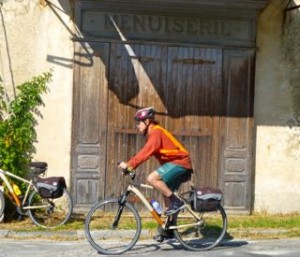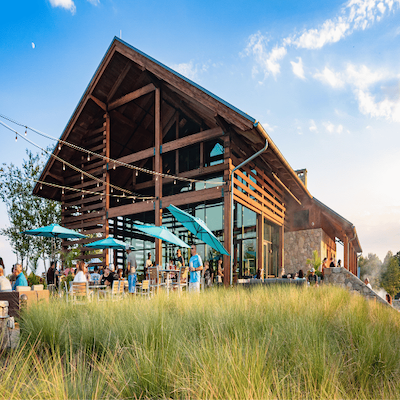5 Golden Rules for Solving the Baby Boomer Travel Problems We Didn’t Have Back in the Day
Category: Travel
October 15, 2013 — Forty or so years ago many of us baby boomers set out for distant parts – armed with tools like a backpack, “Europe on $5 a Day”, a EuroRail Pass, and a spirit of adventure. Whether it was a post-graduation trip to Europe or a motorcycle excursion out west, we experienced the joys of discovery and new experiences. Now, flash forward to us hitting retirement age and looking forward to more travel experiences. The desire is the same, but the travel might not be quite as easy as it was back in the day.
Part 1 of this 2 part series will focus on the new travel problems that baby boomers typically face as we roll up higher mileage on our personal odometers. We will also provide suggestions and tips on how to overcome these difficulties. Part 2 will go over different strategies for finding the travel options that work best for you.
Travel is a big part of most people’s retirement plans. Whether it’s a cruise, RV trip through the National Parks, African safari, or barge trip through Europe, many of us look forward to getting some travel under our belt.
5 Golden Rules
We’ve come up with 5 golden rules for making baby boomer travel easier:
1. Keep your sense of humor. Travel is an adventure, and there will be highs and lows. If you keep smiling, you and your companions will have a lot better time.

2. Lose the luggage. Most people pack way too much, and that extra stuff causes a lot of problems. First of all, you’ll have to check it, then wait for it to come off the plane. It might get lost or broken into. Boarding a bus or subway with heavy luggage is a nightmare. The same goes for carrying it up and down steps, or getting it on a tiny elevator. Make travel easier: stick with one stowable rollerboard and a small backpack.
3. There’s an app for that. Travel has gotten so much easier with smartphones and all the apps that come with them. These tools are great for directions, translations, restaurant and hotel reviews, what attractions to see. You can even download podcasts with tours of whatever it is you want to see. And oh yeah, you can use them to call home and check your email.
4. Plan ahead. Not to say you should avoid spontaneity, far from it. But spend a little time studying how to get to places in advance (for example, if you search on Google for how to get from Grand Central Terminal to Penn Station in NYC, you’ll find the answer online). You’ll get there with less hassle, and you’ll avoid the lost deer in the headlights look that many older people take on when traveling, which makes them more susceptible to crime.
5. Don’t be afraid to ask directions. It’s a lot easier to get started on the right path, so lose the macho thing: go ahead and ask. The kindness of strangers is a wonderful thing. Also, don’t under-estimate the helpfulness of hotel clerks. There is something special about most people who work in hotels, they really seem to want to help. Rely on them for restaurant recommendations, what to do, how to get somewhere.
Armed with the 5 golden rules down, let’s focus on some of the problems that we baby boomers face when traveling, issues that we might not have had when we were in our 20’s.
The worst baby boomer travel problems
Let’s face it, we’re not as young as we once were. While there’s plenty of spirit in the tank, our physical capabilities aren’t quite what they once were. We also tend to be a bit more cautious, having learned the hard way that that can be a good thing.
The issues we discuss here tend to have a foreign travel focus, but most also apply to domestic travel.
– Who was the 20-something that chose the ridiculously small type on this map?
Solution: Obviously the first solution is to bring your reading glasses, preferably on a strap. But an even better solution is to use the Maps feature on your smart phone. Find the button that gives you your present location, then zoom in or out for perspective. Enter street names or addresses and get a route. Combined with a map, a smart phone makes getting you to your destination that much easier.
– Bringing too much stuff. Over-packing can cause endless problems. You’ve got to lug the stuff around, causing inconvenience at every turn.
Solution: here’s our favorite tip. Put out a rollerboard suitcase that’s sized to fit in an overhead compartment. (Maximum carryon size for airlines is a total of 45″ for all dimensions – no dimension can exceed 21x14x9). Create a list of what you think you need to take for your destination’s weather, activities, and level of formality. Two days before you leave, start filling it from that list. When the suitcase is filled, either stop packing, or go back and discard non-essentials. Anything that’s left over and that you absolutely must have goes in a small backpack (including your purse if you have one). When you get back, update your list with what you never wore, and leave that out the next time. Wrinkle free, fast dry clothes are a a must. Bring an Ereader instead of paper books.

– Finding (the right) travel companions. Traveling by yourself isn’t as much fun as with a compatible friend. But you do have to find someone that wants to do many of the same things, eat at the same times and places, go to the same attractions. Can they make a decision? Or, are they too rigid?
Solution: have a mini-trip first to make sure you and your friends can get along. Start a discussion with likely companions and see how that goes. Or, travel with a group.
– How to Make reservations, particularly when you can’t understand the language
Solution: Make them online before you leave. Have your hotel make them for you. Or use a travel agent. And by all means use Tripadvisor.com, Zagats, and other guides to get you an idea of what’s worth going to and what’s not.
– Adjusting to jet lag and different time zones. Arriving somewhere after a long flight can be exhausting and disconcerting.
Solution: Sleep on the plane as soon as you can. Don’t drink, or be very moderate with alcohol. Take a short nap when you arrive, if you can get into your room.
– How much to tip. Americans have taken tipping to absurd levels, in our opinion. Figuring out how much to tip waiters, bellhops, taxi drivers, etc. in a foreign country can be very confusing.
Solution: almost every good guidebook has a section on how much to tip for various services. Read that before you arrive. You will probably be pleasantly surprised – for example in Paris the tip is required by law to be included in the price of the meal – most Parisians don’t add any more.
– Staying safe, now that we’re bigger targets. Pickpockets and thieves are a lot like the wolves and lions on the Nature Channel- they live off the weak. So, looking confident and being aware of your surroundings is very important. Keep your valuables in the safe in your hotel room or in a pouch that hangs around your neck and inside your clothes. Pickpockets create distractions like bumping into you or spilling something on you – back off immediately and yell.
– Renting a car and driving in a strange environment
Solution: Check with your insurance company to see what coverage you have now, and what (if any) you should purchase. Many credit cards provide plenty of insurance. But you definitely need to know what you are covered for. Don’t try to drive and navigate at the same time. Get a map or GPS and study the route in advance. Overseas, standard shift cars are usually much cheaper to rent than automatics. 
– I can’t understand the language. It can be devilishly frustrating not to be able to understand public announcements, signs, or people speaking in a foreign language.
Solution: Research your trip so you have an idea of how to execute key travel moves. Get an foreign language app or dictionary. Ask your hotel for help. Hire a guide, or go on a tour. Take a language class online.
– How to eat well when the food, and the time to eat it, are not your usual. Depending on your dietary habits, you might not be ready for some of the food that ends up on your plate. In some situations you might have no idea what to order. Another issue is finding a restaurant that’s open when you want to eat. In Spain, for example, finding a restaurant that’s open for dinner before 8 or 9 pm is just about impossible.
Solutions: bring a dictionary, guidebook, or translation app for your phone. Ask the waiter about what a word means, or even point to a dish on another table that looks appealing. Take a nap before dinner.

– Keeping in touch with family, friends, and the world.
Solution: As we mentioned before, smart phones are a wonderful tool on a trip. If you go abroad, call your cell phone company before you go and buy a data package and international calling plan. You can get by using the wifi at your hotel, but once you are on the street your map function and ability to search for information are on hold.

Conclusion
In the next few weeks Part 2 of this article will explore how to find travel options that match your interests and abilities. In the meantime, start planning your trip(s). We bet you will have a fabulous time!
Comments. Where are you thinking about traveling to, and what great places have you already visited? Have you noticed differences in your travel abilities and preferences now that you are a little older? Please share your thoughts and tips for easy traveling in the Comments section below.
For further reading:
If adventure is your thing, you should definitely check out this Wall St. Journal article on adventure travel – has links to tons of companies that specialize in it.
Don’t miss the series of articles in our Adventurous Retirement section, including a host of articles on cruising and bucket lists.






Comments on "5 Golden Rules for Solving the Baby Boomer Travel Problems We Didn’t Have Back in the Day"
Sharon says:
Great idea for an article. I still travel a lot for business, and my biggest problem is getting around those massive airports. I suggest bringing one of those canes that folds up. It's surprising how easier it makes hiking through airports. I avoid a carry-on bag whenever possible. Not only is it tiring to pull around everywhere, but it can be too heavy to put in the overhead myself. Stewardesses have told me that they aren't allowed to help with overhead luggage due to possible injuries, and it's hit or miss whether one will help. It's always a problem getting a carry-on bag up & down the gateway and aisles too. I schedule connecting flights with plenty of time, since the distance between gates or terminals is sometimes a huge issue. My days of running through terminals are over! Getting to the airport is also an issue. If I can't rope someone in to help, I strategize on parking and use off-site parking with a terminal drop-off or short-term parking that minimizes walking.
If I'm renting a car, I bring my own GPS with a nice large screen. I preload addresses at home, which makes getting out of the rental lot easier. I also try to schedule flights to arrive either early in the morning, or after rush hours the night before. While I don't like driving at night anymore, I find it's easier to drive in unfamiliar surroundings when I can change lanes or find exits without dealing with rush hour traffic.
With planning and patience, the travel portion of the trip can be made as painless and enjoyable as possible.
Carole says:
My days of business travel are over, thank goodness! This Friday we leave on a 16-day trip to Europe with 12 of those days being a cruise out of Venice and ending up in Barcelona. It's a trip of a lifetime for our 40th wedding anniversary and my husband's retirement. I had already planned for the smaller suitcase and backpack. I'll wear my outfits a couple of times and brought similar colors, so I can mix and match. Advance planning is key but don't let it take over the serendipitous nature of traveling. Some things I learned planning for this trip. Use an interactive packing checklist to make sure you don't forget items from home. (Don't rely on your memory. :wink:) You can find these online. Use Trip Advisor to find the top restaurants in an area within your price range. You can also use Trip Advisor to find out the top attractions for a city/country. Audio tours are freely accessible to download for many European cities on Rick Steves' web site. Buy currency from your local bank where the exchange rate and fees are usually less than the kiosks you find at the airport. Check with your bank on using ATMs for free (they have reciprocal agreements) in the countries you're traveling to, and get a fee-less travel charge card on which you earn points on what you spend. Earning points towards your next trip.
Lynn says:
I never check bags and travel with nothing more than a rolling suitcase that fits into the overhead bin and a backpack that fits under the seat in front. I have a list of what I take on a trip that is stored in an excel spreadsheet to help with packing (I modify the list after each trip, based on experience). Before a trip I will check out multiple travel guides from the local library, before settling on a guide. I travel with an Apple iPad, as I have a hard time viewing the small maps on a smart phone. I have books, maps and a chosen travel guide on the iPad. I use Skype to communicate with folks rather than the phone, though in Japan I leased a phone. I store hotel confirmations and make reservations using the hotel room wifi or even Starbucks. When I arrive in a country, I often take a tour the first day. It helps to get oriented and to stay awake on the first day. It is important to stay awake on the first day, so as to adjust to the new time quickly. Sunlight helps, too!
Jan Cullinane says:
Drove around the Costwolds and Lake District in England. Purchased the UK chip for my Garmin before going. It was a life-saver!
Ginger says:
I have a bad knee, bad foot, bad back. Ah aging! As a result I travel lighter and lighter. I now have a carryon that will fit under most seats and a small backpack, and that's what I use. I do this by packing light. IPad, not computer. Minimal wardrobe. I have found the website Travelsmith.com to be an excellent source for affordable clothing that packs small and can be hand-washed. Magellans is another choice. Even places like llbean have special travel clothing. I find I can travel, and be comfortably dressed, with two pairs of black knit pants that can be hand washed and hung to dry, a handful of comfy tops (4 or 5), a light jacket or sweater, 2 or 3 pairs of quick-dry undies, a nightgown, and 2 pairs of shoes. Sometimes I add travel slippers. Since I have black pants I can have any color top, so mi usually have at least one or two black ones, then whatever color coordinates with the jacket I bring. Oh...and I also bring an outdoor jacket or coat. If summer, a lightweight waterproof jacket. If winter, a waterproof and warm jacket. The key to making this wardrobe work is scarves and jewelry. You can wear the same black pants and black or white top time after time, and look different by adding a different scarf or different jewelry. And scarves and jewelry pack small. I am wearing one paid of pants, a top, the lightweight jacket and the outerwear jacket, plus one pear of shoes in black usually. My bag only has 1 pant, 4 tops, undies, socks in winter, spare shoes (flip flops or sandals in summer, sneakers in winter), swimsuit in summer, scarves and jewelry. In summer I may add one paid of black capris to wardrobe. Black is a great choice. there are very few places you cant go dressed in black pants, a nice black top or sweater, and a dressy scarf. If you don't like black, pick another dark neutral....navy, grey, forest green. Even khaki. The key is to pick something that can be mixed and matched. Then pick a complimentary color or two. White is always good. With navy I like green. With dark green I like peach or red. With khaki I like red and black. Once you pick your color s heme, stick with it and get scarves and jewelry. And don't forget that these clothes should be the kind you can wash in a hotel sink and hang to dry. Bring along travel size laundry soap. This makes travel so easy. Oh...and lighten your cosmetic bag as well. Buy colored colored moisturizer that can double as moisturizer and makeup. Take tinted lip balm that conditions and colors your lips. Travel size shampoo and conditioner and toothpaste, etc. if it is cold, get a set of silk long underwear, and they can double as pajamas.
I traveled three weeks in Europe with a small backpack and was always dressed appropriately and comfortably.
Jennifer says:
Hi Ginger:
I have been using Travelsmith for a while now. I always dress in a core color of black top and black pants and then add color through the jackets, scarves and jewelry I use. I travelled a lot formerly, but apply the same principals to my work wardrobe. The clothes that Travelsmith sells are lovely reasonably priced and functional. I always feel well dressed and have had comments on how nice I look no matter what the occasion. Europeans dress better than we do in the evening especially. I have found that I save a tone of money by dressing this way and sticking to classic clothing.
Ginger says:
Jennifer...there is a big movement sweeping the country to pare down and simplify....for many reasons. Saving money, making better use of resources, focusing our minds and energies somewhere other than our stuff...
The wardrobe scheme you described is a great way to move toward this simpler, more purposeful living. Who wants closets full of possibly expensive and probably unused stuff? Trim down! Go light! Have more time and more fun, with less stuff.:grin:
Elizabeth says:
One difficulty I find is if we go to several different climates on the same trip -- ie, going in September, we went from cooler Prague and the Bavarian Alps to hot and humid Barcelona, and the same clothes just don't work for me in those two different places. Light cotton shirts and capris in Barcelona, sweaters and pants needed in Prague... I still haven't figured out how to just take one wardrobe. Maybe we just need to pick either a northern OR a southern route and not try to combine them!
Ginger says:
Elizabeth, actually it isn't that hard. I mentioned silk long underwear above. If you take knit pants and layer them with silk long johns, then take a good warm jacket to wear when colder, it works out very nicely. Leave the long johns and jacket off when warmer. You can also get nice pants from Travelsmith that has a button cuff to turn long pants into capris. And long sleeve shirts with roll up button tab shirts to make long sleeves short sleeves. Again, check out Travelsmith or Magellan. I went to Europe over Xmas. Quite cold in Switzerland, and much warmer on the Rivera. I took 2 Pair of black knit pants, silk long underwear, two pair of merino wool socks, sturdy black clogs, and a pair of black flats, and four long sleeved shirts. I took a light weight fleece, and a heavier waterproof jacket. And a paid of gloves and knit hat. On the Rivera I wore black pants, long sleeved shirts with cuffs pushed up, and flats. If it got chilly in the evenings i wore the fleece. And a nice scarf of course. In Switzerland I added long underwear, socks, heavier jacket, gloves, clogs...and I was good to go. And it all fit one one small backpack.
Allison says:
These are wonderful ideas for packing light. We are retiring soon and I'm looking for great ideas! Thanks! :)
Chris says:
Lots of good tips here - for everyone, not just Baby Boomers! :lol:
I can't relate to the "traveling light" tips though. Being on vacation and not having everything I want is more stressful to me than traveling light. I like to have a lot of things with me as well as choices in clothes, shoes, etc. That makes me more comfortable than paring down. I don't mind carrying it - it's not a problem for me. People are different. Traveling light doesn't work for everyone. A big help for us is to look up things to do and places to go in advance of our trip so we can become familiar with the area before we get there.
I love traveling!
Larry says:
My days of traveling to foreign destinations (except Canada) are over. Too much hassle. My wife and I only travel by motorcycycle here in the USA. There is do much to see and do. We meander with the weather. What a life.
says:
Hi - nice synopsis and great comments. There are loads of travel tip sites also that provide great information, especially if you are a first time traveler. I would also add that while independent travel is great sometimes taking a tour can be very satisfying. There are pros and cons to both but especially as physical abilities change tours can offer wonderful travel experiences that are not as strenuous. They also handle your luggage and have attentive guides. As a solo traveler I have also found you have great companionship with mostly like-minded people to share the experience. I have met some very interesting people from around the world this way. I have and still do travel independently also but tours, although not for everybody, can eliminate many of the issues and concerns that come along with independent travel. Just something to consider. Happy Travels!
Brian Luckhurst says:
Some very useful tips, many thanks. Can I suggest Home Exchange as one travel option as it is becoming more and more popular and a great way to travel. Why pay to stay in a hotel or rent somewhere when you can stay for free? Saving money is the main reason for swapping homes but there are many others including providing a different experience to the more traditional forms of travel.
However you travel, enjoy.
Cheers
Brian
j. kastel says:
I find the feedbacks incredible. How generous this readership is. I have 2 questions: Where in Florida are there adult communities without golf courses? I have posed this question numerous times without ever receiving a response. Can anyone help? Secondly, I used to receive a weekly newsletter for retirement communities, usually Monday or Tuesday, but it's vanished from my system. Does anyone know about this newsletter, and How I might re-subscribe? THank you all so much, j
Editor's note: Perhaps some other members can suggest their favorite non-golfing FL communities. There are 100s of them, which you can find in our Florida Active Community Directory.
http://www.topretirements.com/active_adult_communities/Florida.html
You can sign up for our free weekly newsletter at http://www.topretirements.com/newsletter/thanks.html And yes, we agree, the member contributions on this site are amazing!
Elaine says:
I am with Chris in wanting stuff when traveling....especially shoes. I need lots of comfortable shoes. Of course, I DO mind lugging it.
Back in the day, I could do business travel very light and no problem lugging the non clothes work stuff and a carry on bag. This getting older has many advantages, but there are definitely tradeoffs.
Ginger says:
Elaine.....aaaah shoes! Love shoes. I can totally relate. One tip that may help.....Merrell makes a line of shoes called Merrell Barefoot. Some of the styles have no padding in foot bed, others have light padding. Surprisingly they all have good arch support. So, because of my age, I thought I needed lots of padding for comfort. surprise! They are the most comfy shoes ever. And they are super light weight. They have flats and Mary Janes, sneakers...even winter boots. And sandals. All very cute. And you could pack several pairs of these easily. They bend, and they weigh a few ounces. They are a little pricey but mine have held up well....
Elaine says:
Thanks for the hint on shoes! That should help lighten the load...assuming that the brand is comfortable for me. If not, I guess there are other light weight alternative that might fit the bill. Thanks again
Lulu says:
Hi,
Thanks so much for the "lighter travel" tips. I have a trip to Peru scheduled and was just thinking about the clothes to take. So timely for me!
Jennifer says:
I own a travel assistant/companion business and I must say that all the tips mentioned above are spot on. Pack lightly use a core color and mix and match pieces, have a sense of humor and expect the unexpected. Most of all have fun. The USA and Canada has many fin places one can travel with relatively little hassle and maximum enjoyment. Train travel takes more time but certainly has lots of options and is much more comfortable than air travel in this day and age. If you need a travel assistant or travel advice--contact me through my website.